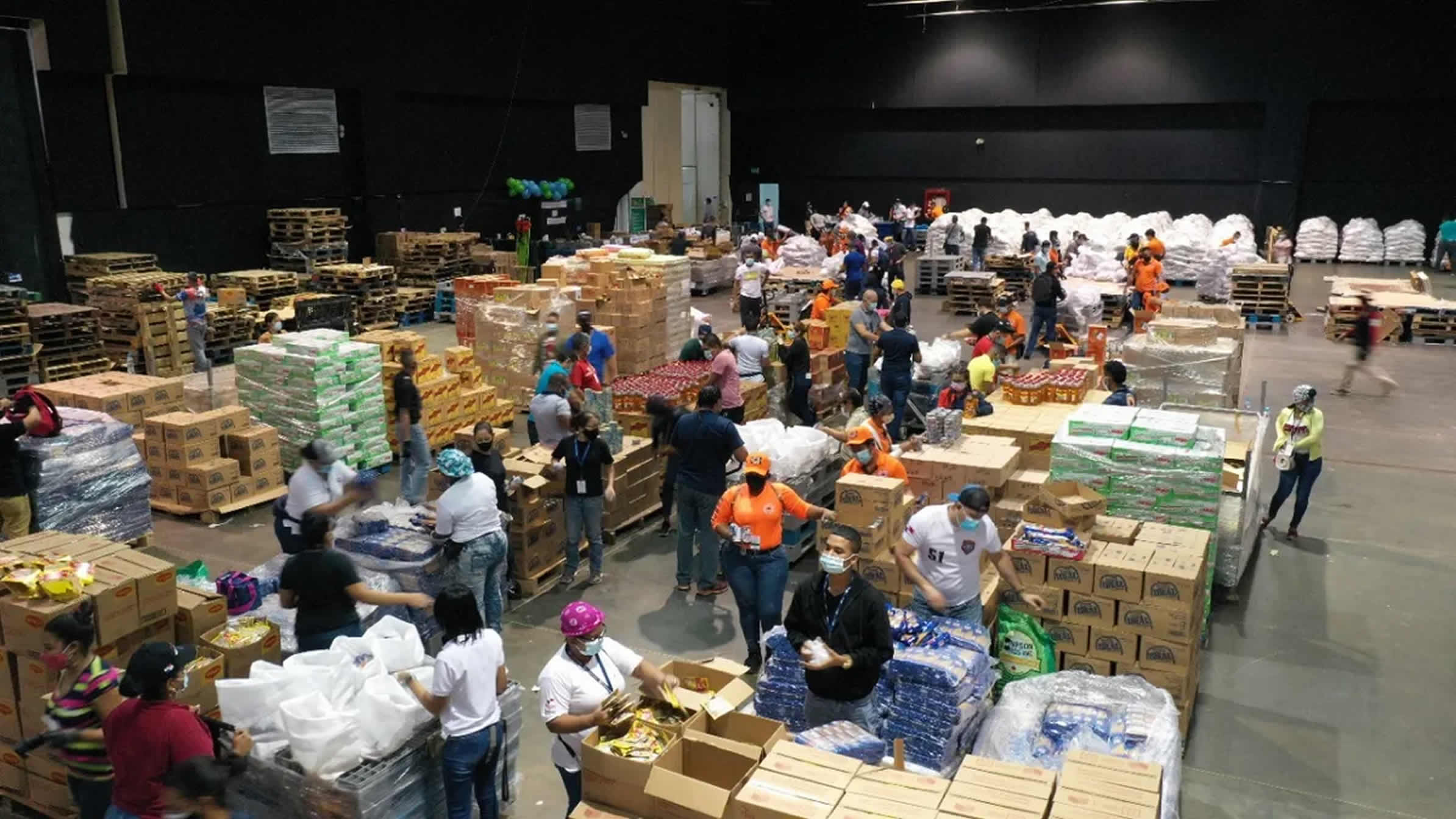In the recent economic history of Panama, few initiatives have permeated the daily lives of its citizens as profoundly as the Panamá Solidario Plan. Conceived in a moment of unprecedented global crisis, this suite of government programs became an essential lifeline, ensuring stability for hundreds of thousands of households. Its remarkable evolution, from the physical distribution of food supplies to a sophisticated digital transfer system, tells a story not just of technological adaptation but of a nation responding dynamically to the pressing social and economic needs of its people. To fully grasp the scope of this plan, one must delve into its origins, its core components like the Bono Solidario and the Vale Digital, and the wider framework of support it provided. For citizens and observers alike, staying informed through reliable Panama News has been indispensable for navigating the program’s changes and understanding the economic landscape that necessitated its creation.
The Genesis of a Lifeline: A Response to National Emergency
As the world grappled with the onset of the COVID-19 pandemic in early 2020, Panama, with its globally connected, service-based economy, faced a unique set of vulnerabilities. The necessary implementation of strict public health measures and lockdowns brought significant portions of the economy to an abrupt halt. The immediate consequences were severe, particularly for the vast informal labor sector, workers with suspended contracts, and families reliant on daily wages for their survival. In response to this looming crisis, the Panamanian government swiftly launched the Panamá Solidario Plan. Its primary objective was direct and unambiguous: to ensure that no Panamanian family would be left without basic food and resources during the period of national quarantine. The initial phase of the plan was highly tangible, involving a massive logistical operation to deliver “mega bolsas” (large bags) of food and physical paper vouchers to communities across the country. While this initial response was vital for staving off hunger and immediate hardship, it also presented significant logistical hurdles, including the complexities of mass distribution, the risk of creating crowds, and the operational costs of a paper-based system. This monumental effort, however, showcased the nation’s capacity for rapid mobilization and laid the critical groundwork for the more streamlined and technologically advanced support systems that would follow.
The Bono Solidario: A Foundation of Direct Support
As the health crisis extended, it became clear that a more flexible and direct form of economic aid was necessary to supplement the physical distribution of goods. This led to the formal establishment of the Bono Solidario, a direct monetary subsidy designed to provide a consistent monthly income to those most affected by the economic shutdown. The program targeted a broad demographic, including individuals whose employment contracts were suspended, self-employed workers who saw their income vanish, and informal laborers who were suddenly without any means of livelihood. Initially, this benefit was also distributed as a paper voucher, but the government quickly recognized the need for a more efficient and secure method of delivery. The ongoing development of this aid became a subject of immense public interest. For those seeking detailed information on payment schedules, eligibility criteria, and program updates, the Bono Solidario Panama became a central topic of focus and inquiry. This subsidy was far more than a simple financial transaction; it was a critical lifeline that empowered thousands of families to purchase food, medicine, and other essential goods, thereby alleviating immense economic and social pressure during a period of peak uncertainty.
The Digital Leap Forward: The Vale Digital Revolution
Arguably the most significant innovation within the Panamá Solidario Plan was the introduction and expansion of the Vale Digital. This development marked a quantum leap in the methodology of government aid distribution, transitioning from physical and paper-based methods to a fully integrated digital platform. The system ingeniously linked the monetary benefit directly to each citizen’s national identity card, the cédula. In effect, the cédula was transformed into a digital wallet, allowing beneficiaries to make purchases at authorized supermarkets, pharmacies, and local grocery stores simply by presenting their ID at the point of sale. The advantages of this digital system were immediate and substantial. It eliminated the logistical costs and security risks associated with printing and distributing physical vouchers, drastically reduced opportunities for fraud, and expedited the entire payment process, ensuring that aid reached beneficiaries faster and more reliably. To maintain eligibility for the Vale Digital, the government introduced a principle of “co-responsibility” (corresponsabilidad). This required many beneficiaries to engage in community service or complete online vocational training courses through the National Institute of Professional Formation and Training for Human Development (INADEH). This requirement aimed to foster civic engagement and skill development, providing a productive pathway for individuals during a period of economic inactivity. Understanding the mechanics of this innovative system, from registration to responsible use, was paramount, and learning about the Vale Digital Panama Solidario became an essential task for citizens to seamlessly access their economic support.
A Broader Safety Net: The Full Scope of Government Aid
It is crucial to recognize that the Panamá Solidario Plan was a multi-pronged strategy that extended well beyond direct cash transfers. It constituted a comprehensive ecosystem of support designed to buffer the economic shockwave across various sectors of society. In parallel with the Bono Solidario and the Vale Digital, the government continued the targeted distribution of food bags, especially in rural and remote areas where access to commercial establishments for redeeming the digital vale was limited. Furthermore, other relief measures were enacted to ease the financial burden on the population. These included temporary subsidies on fuel to control the rising cost of transportation and its knock-on effect on food prices, as well as moratoriums on loan payments and utility bills for both individuals and businesses. This holistic approach demonstrated a nuanced understanding of the crisis, with each component of the plan tailored to address a specific need within the country’s complex socio-economic fabric. For the populace, having a clear overview of all available forms of assistance was vital to fully leverage the support system. Consequently, staying informed about the various Panamanian Government Aid Programs became a necessity for families seeking to navigate the crisis and identify all potential avenues of support to which they were entitled.
Access and Verification: Putting Aid into Citizens’ Hands
With a program of such massive scale and reach, ensuring transparent and direct access for beneficiaries was a top priority. To achieve this, the government developed and deployed a suite of digital tools that empowered citizens to check their status within the program independently. Platforms like Listo Wallet and the CEDULA-D web portal became essential household resources. Through these user-friendly online systems, individuals could simply enter their cédula number to instantly verify their enrollment status in the Vale Digital program and check their available balance. This self-service model was transformative, giving citizens direct control over their information, reducing their reliance on intermediaries, and eliminating the need to visit government offices—a critical feature during a time of social distancing. The simplicity and accessibility of the process were key to its widespread adoption and success. For hundreds of thousands of Panamanians, the action to Verify Bono Solidario Panama became a regular monthly routine, a necessary step to confirm the deposit of their subsidy, which allowed for better financial planning and household budgeting. This digital infrastructure not only facilitated the efficient management of the aid program but also set a powerful precedent for the future of digital governance and citizen services in Panama.
Socio-Economic Impact and the Path Forward
The socio-economic impact of the Panamá Solidario Plan has been profound and multifaceted. At the height of the crisis, the program was unequivocally instrumental in preventing a deeper humanitarian and economic catastrophe. It guaranteed a baseline of food security and provided an economic cushion that kept countless families from falling into extreme poverty. By sustaining a minimum level of household consumption, the plan also supported the local economies of the thousands of small and large businesses that were part of the redemption network. As the national economy began its path to recovery and the public health emergency subsided, the national discourse naturally shifted towards the program’s long-term sustainability and the strategy for its eventual phase-out. The periodic extension of the Vale Digital became a recurring topic of national debate, weighing its continued necessity against its fiscal cost and potential impact on labor market incentives. The transition from emergency aid to long-term policies focused on job creation and economic reactivation remains a central challenge. The Current Events in Panama are heavily influenced by these ongoing conversations about the future of social subsidies, strategies to strengthen the labor market, and the pursuit of inclusive, sustainable economic growth in the post-pandemic era. The legacy of Panamá Solidario is therefore twofold: it stands as a testament to national resilience and solidarity in a time of crisis, and it has irrevocably accelerated the digitalization of social services, opening a crucial and enduring dialogue about the very structure of social protection in the nation.










